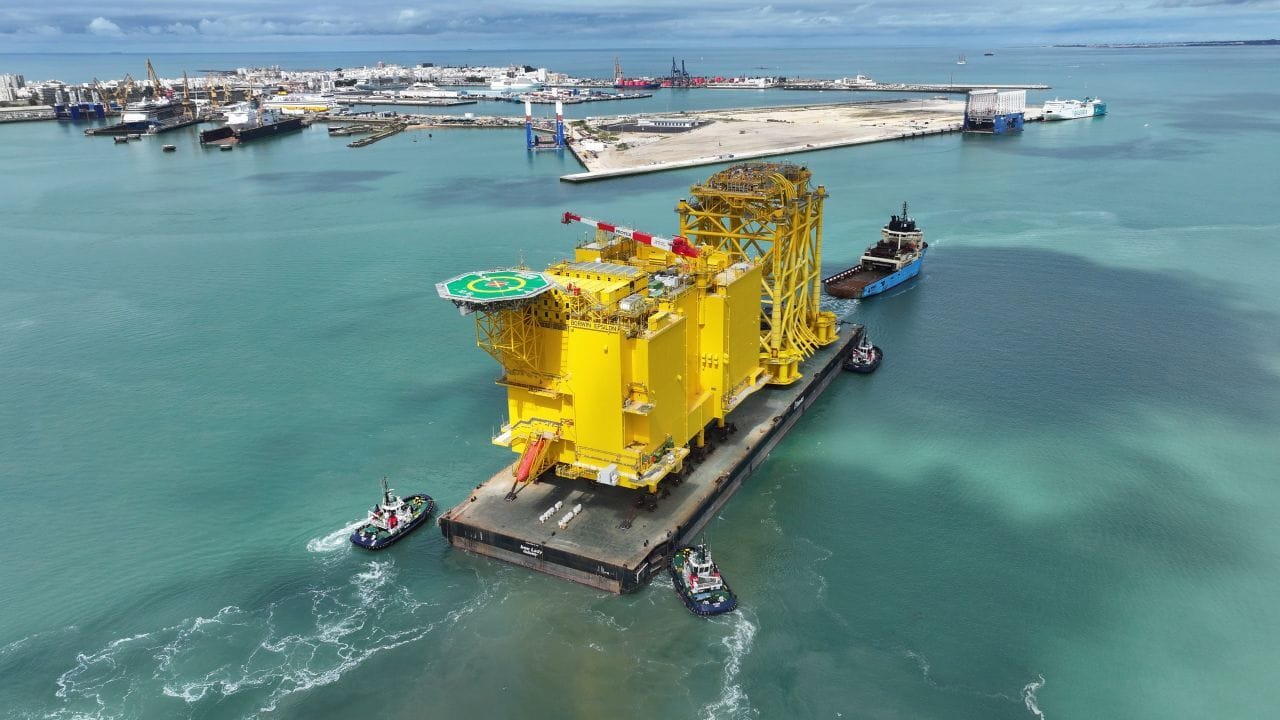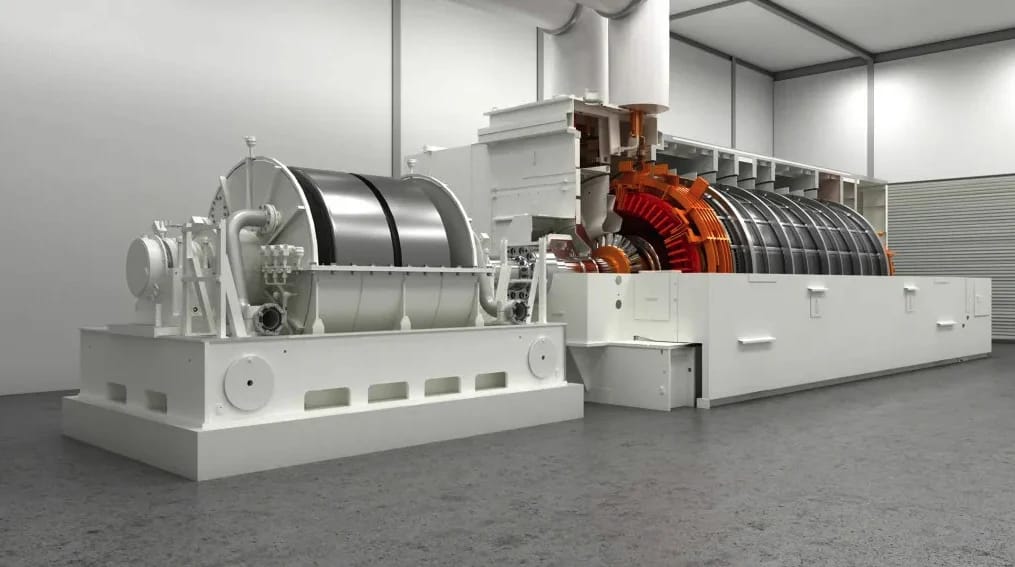- Supercool
- Posts
- 🌐 3x the Grid: Siemens Energy and the Race to Rewire the Future
🌐 3x the Grid: Siemens Energy and the Race to Rewire the Future
It took 150 years to build the modern power grid. We have 25 to triple it.
According to the Bureau of Labor Statistics, the average American switches jobs every 3.9 years. It’s even shorter for younger workers chasing a better paycheck or a mission they believe in.
Tim Holt has been with Siemens Energy for 30 years.
That’s seven job changes he never made.
Now he sits on Siemens Energy’s Executive Board, overseeing its Grid Technologies business and operations across the Americas. He’s also the company’s Labor Director.
So why has he stayed?
“I never had a boring day at the company,” Tim says. “I never woke up in the morning and said, well, you know, I don’t want to go to work.”
Over three decades, he’s helped bring to life turbines that run at temperatures that melt metal, wind blades the size of football fields, and green hydrogen systems powered by renewables.
It’s kept him at the frontier of some of the most ambitious energy infrastructure projects in the world.
Now the action is heating up.
“It took the modern world 150 years to build the power grid we have today,” Holt says. “Now we have to build that much capacity again in just 15 years—and then do it again in the 15 [years] after that.”
That’s turned what used to be a sleepy corner of the energy sector into one of the most dynamic industries on Earth.
The Rise of Big Infrastructure
The clean energy future runs through the grid, and there’s no getting around it.
No EV transformation. No green hydrogen. No electrified factories or AI-powered data centers. None of it scales without a power system that’s bigger, faster, and smarter than the one we have today.
Siemens Energy is leading this shift. Its technologies already form the backbone of one-sixth of all electricity generated worldwide. Now, it’s rebuilding the transmission grid that the future depends on.
Sing all the praises you want about Big Tech. This is Big Infrastructure—and there’s no future without it.
The Tools of Transformation
Siemens Energy is scaling on two fronts:
Building more: Substations. HVDC systems. And 20,000-ton offshore platforms the size of 11-story buildings—linking wind farms in the North Sea to Europe’s grid.
Making it smarter: Layer real-time intelligence into every transformer, line, and node.
“The grid is becoming like a self-driving car,” Tim says. “First, you need the sensors. Then the software. Then the intelligence that steers the system.”
It’s about getting more electrons through the same wires while building new ones at a record pace.

Siemens Energy’s 11-story HVDC transmission system on its way to the North Sea earlier this month.
Stability without Smokestacks
As utilities retire fossil fuel plants, we lose the massive spinning turbines that perform the vital function of stabilizing the grid’s frequency.
Utilities now face a critical question: What replaces that critical inertia?
One answer: synchronous condensers—giant machines that spin in place, supplying the physical inertia modern grids require.

A Siemens Energy Synchronous Condenser operating in Ireland.
Another approach: pairing batteries with power electronics.
“People think batteries alone solve the problem,” Tim says. “But stabilization is about speed. You need technologies that can respond in milliseconds, not seconds.”
In Ireland, Siemens Energy deployed a hybrid system where energy storage works alongside ultra-fast electronics to regulate frequency in real-time.
Together, these tools form the new backbone of grid stability, replacing the coal and gas infrastructure of the past with the speed and precision of software.
The Power Industry’s Toilet Paper Moment
Grid infrastructure used to be a quiet corner of the energy world. Steady demand. Slow innovation. Minimal urgency. Then everything changed.
First came COVID. Utilities hit pause. With uncertainty everywhere, infrastructure investments froze.
Then came the war in Ukraine. Suddenly, energy security wasn’t just a European issue—it was a global priority. Countries rushed to reduce their reliance on fossil fuel imports. Renewables surged to the top of national agendas.
Then the world started taking net-zero targets seriously. Distant climate goals suddenly turned into real procurement schedules. Governments started mandating timelines. Utilities began placing orders.
And then…the panic started.
“We called it the toilet paper moment,” Tim says.
Everyone was stockpiling transformers and switchgear—just in case. At first, it looked like an overreaction, but the rush never let up.
Flat growth gave way to 10% year-over-year demand. Utilities shifted from six-year planning cycles to 15-year grid buildouts.
Building at the Speed of Climate
Siemens Energy stepped up. Today, that looks like:
$1 billion in factory expansions
4,000+ hires in the last two years
7,000–8,000 more planned
Training partnerships with community colleges in the U.S. and talent hubs in India, Mexico, and Romania
The biggest constraint isn’t capital—it’s talent.
“You don’t pull 800 skilled transformer builders off the street,” says Tim. “This isn’t a car factory. These products are complex. So is the workforce.”
Marrying Stability with Speed
Even with all of this momentum, the system still drags. Permitting is slow. Standards vary. Everyone—utilities, manufacturers, regulators—is operating within someone else’s constraints.
“If I had a magic wand,” says Tim, “I’d get all the stakeholders in a room. After one hour, we’d have a plan. And then we’d just execute.”
But the system wasn’t designed for speed. It was designed for stability.
“Does a utility CEO get fired for not being innovative enough?” Tim asks. “Or for a two-hour blackout?”
Still, the urgency is there. And Siemens is doing everything within its power to meet the moment. Build. Digitize. Train. Scale.
Supercool Takeaway
The clean energy transition happens with scaling grid capacity, real-time stability, and enough trained workers to build what the future demands.
Siemens Energy isn’t just planning for it. It’s executing across continents.
This is what industrial climate action looks like:
$1B in factory expansions
10,000+ new hires
Smarter, faster grid tech
The backbone of a net-zero economy
And if your own 3.9 years are nearly up, tripling the grid might be the most secure—and meaningful—move you can make in the decades ahead.
Listen to this podcast episode on Apple, Spotify, YouTube, and all other platforms.

↓
Stat of the week: 152 Million
The number of power lines that will be needed for the world to reach net-zero by 2050, according to Bloomberg New Energy Finance. That’s twice the length of today’s transmission grid.

Quote of the Week:
“Power generation can be thought of as the heart of the energy system, and a reliable and efficient transmission and distribution grid as the arteries and veins. And as countries around the world transition to renewable energy sources and aim to triple global renewable power capacity by 2030, the need for resilient grid technologies – for strong, unclogged blood vessels, so to speak, has never been greater.”
- Tim Holt, Member of the Executive Board at Siemens Energy (link)
↓
To Build a Supergrid

China’s Ultra-High Voltage (UHV) transmission lines under construction.
Tim Holt discussed how building grid infrastructure at scale takes everyone moving in the same direction. China offers an instructive example of how it’s done.
In just over a decade, China has constructed nearly 30,000 miles of ultra-high-voltage (UHV) transmission lines—enough to circle the Earth. These “Shinkansen (bullet trains) for power” move electricity across the country at nearly the speed of light, with minimal loss. They're what make it possible to build solar farms in the Gobi Desert that power skyscrapers in Shanghai.
China’s clean energy rollout is massive and historic:
In 2024, China added 278 gigawatts of solar capacity—more in a single year than the U.S. has installed in its entire history.
In 2024, wind installations reached 80 GW, up 18% from the previous year.
Solar and wind now generate 18% of China’s electricity—and rising.
China is the largest producer of solar and wind electricity in the world.
Still, critics point to China’s continued construction of coal plants and argue there’s no point in reducing emissions elsewhere until that stops.
There’s some truth to that. But it’s equally clear that China aims to lead, not lag.
In 2024, 38% of its electricity came from renewables, including hydro, just shy of the global average of 41%. The U.S. hit 42%. When you consider that China serves a population larger than the U.S. and Europe combined, the scale of that achievement becomes clearer.
Yet, production is only half the challenge. Delivery is the other. That’s where UHV comes in.
Unlike most national grids, China’s strategy is centralized, coordinated, and built to move power over long distances. The Fengxian Converter Station, for instance, channels hydropower from the Xiangjiaba Dam, 1,200 miles away, to light up homes and factories in Shanghai.
This is what makes China different:
Decades-long planning horizons
Clear regulatory frameworks
A mandate to integrate renewables
Grid operators aligned with national climate goals
China’s ambition doesn’t stop at its borders. Beijing is pushing for a Pan-Asian clean energy supergrid.
The vision: link national grids across the region, so countries can tap each other’s wind, solar, and hydropower when their own resources dip. It's part climate resilience, part energy diplomacy—and it's a big part of the low-carbon future that is already underway.
↓
Where Supercool Traveled This Week

My latest article for Fast Company: Inside the climate innovations reshaping our buildings
↓
Not yet subscribed to Supercool?
Click the button below for weekly updates on real-world climate solutions that cut carbon, boost the bottom line, and improve modern life.
🌐